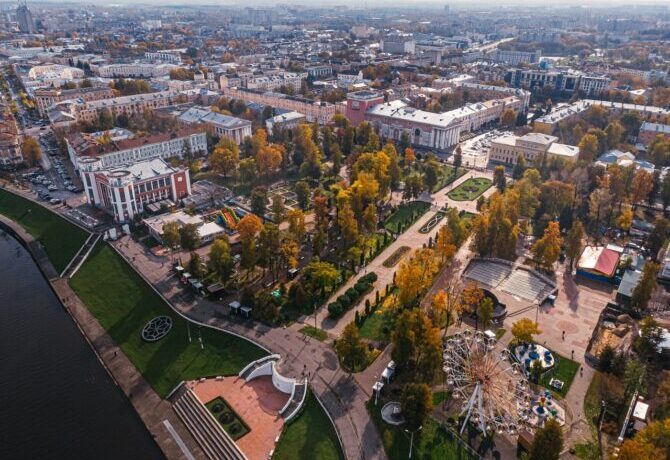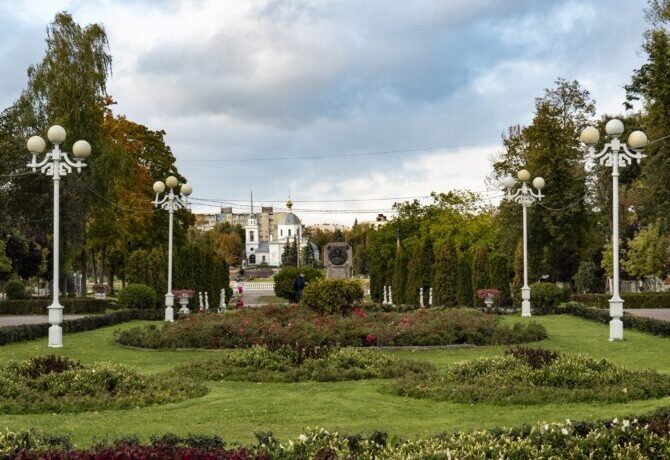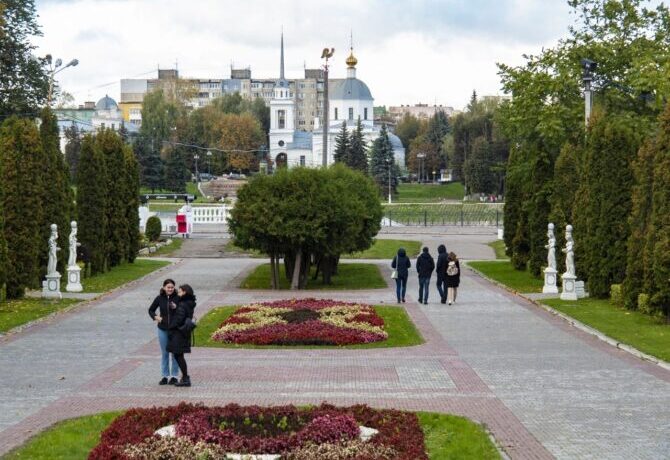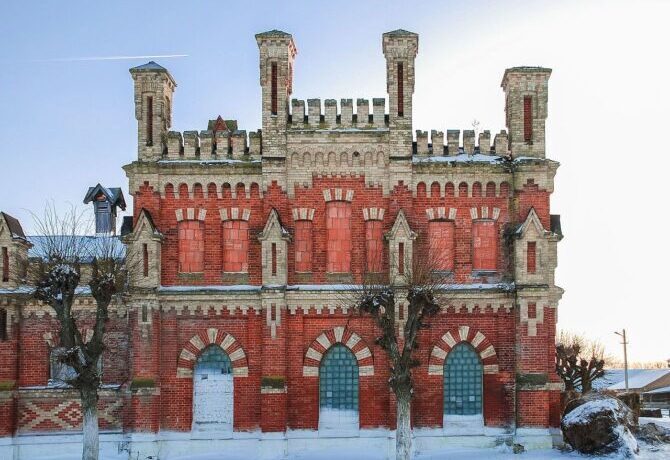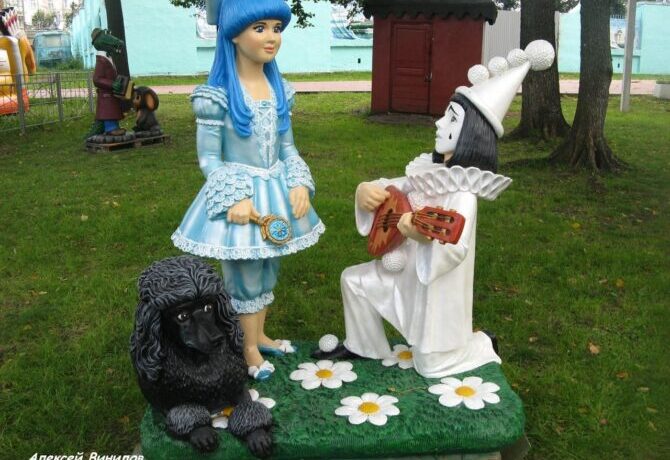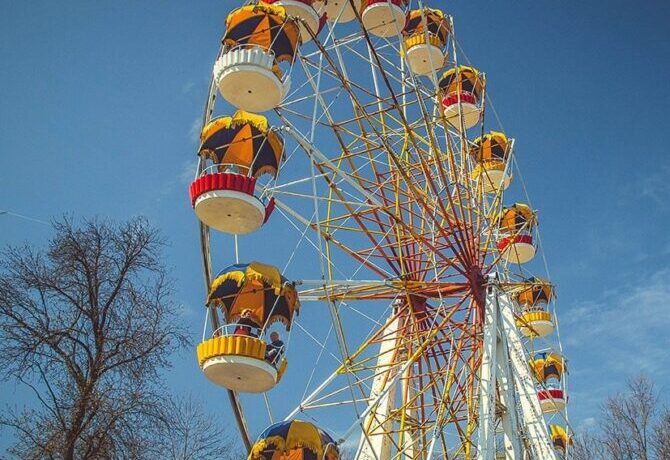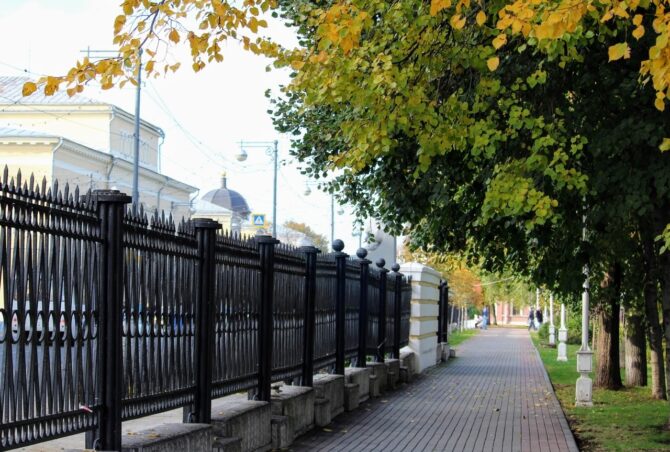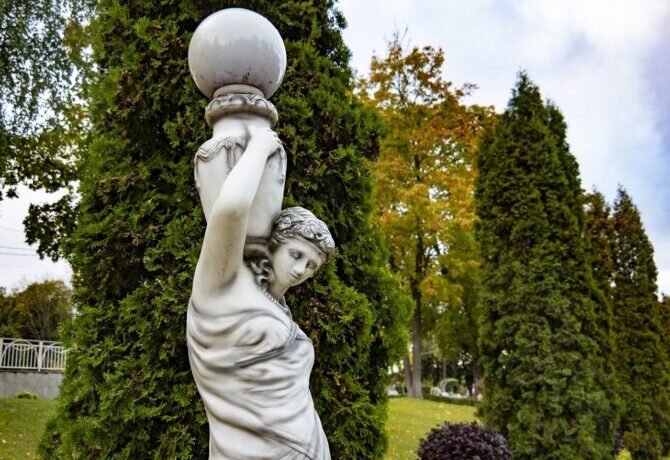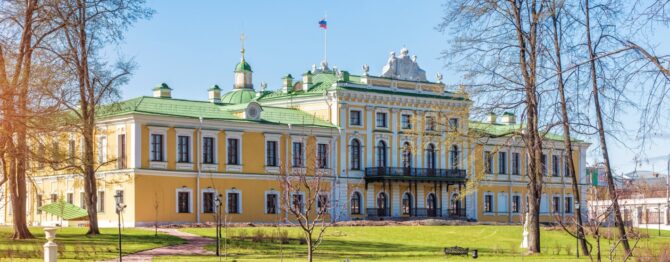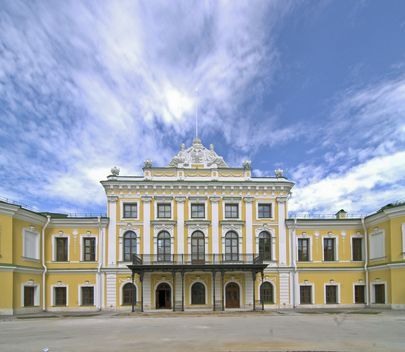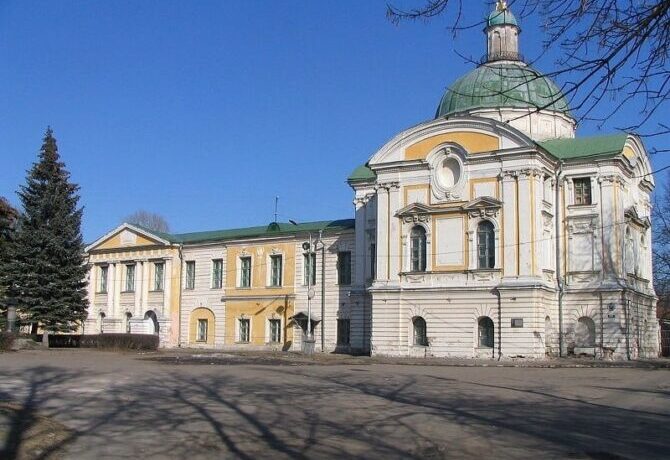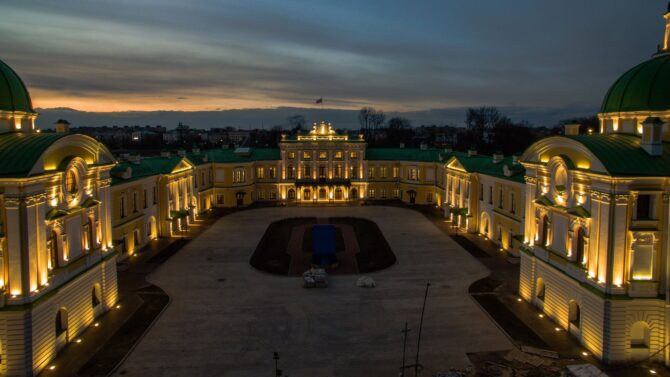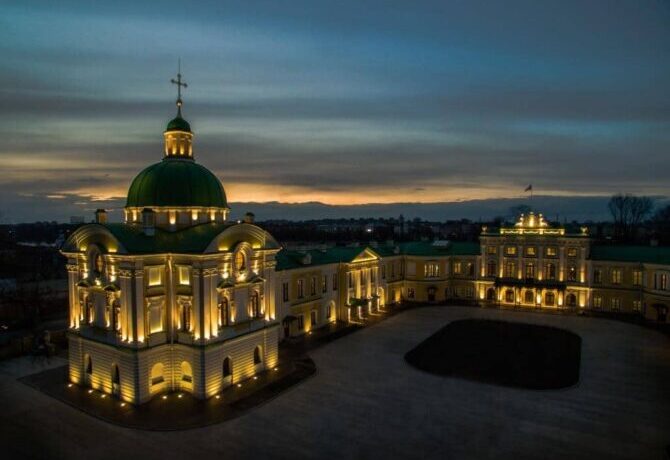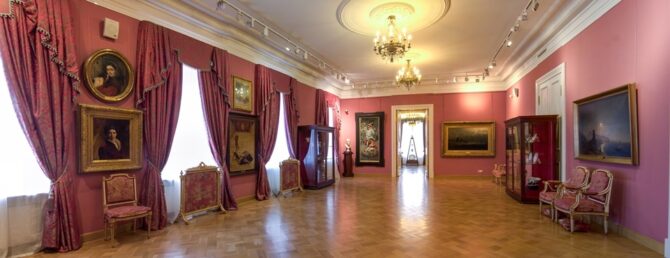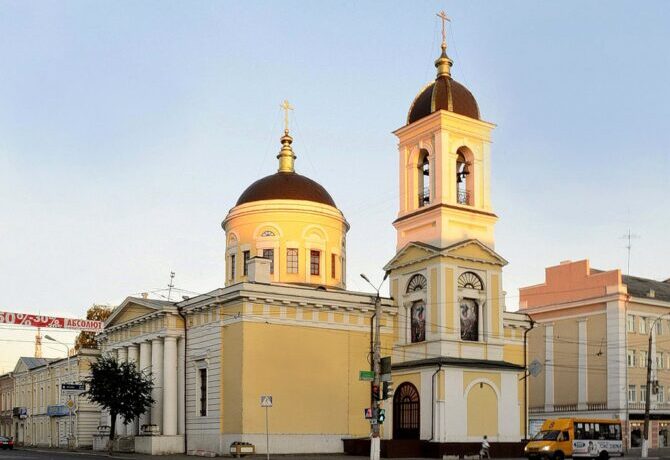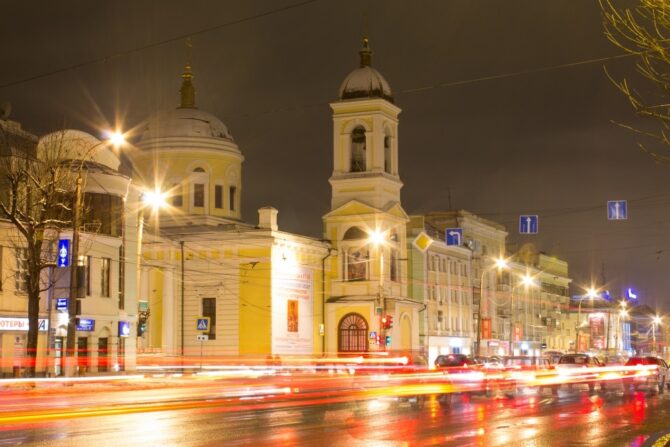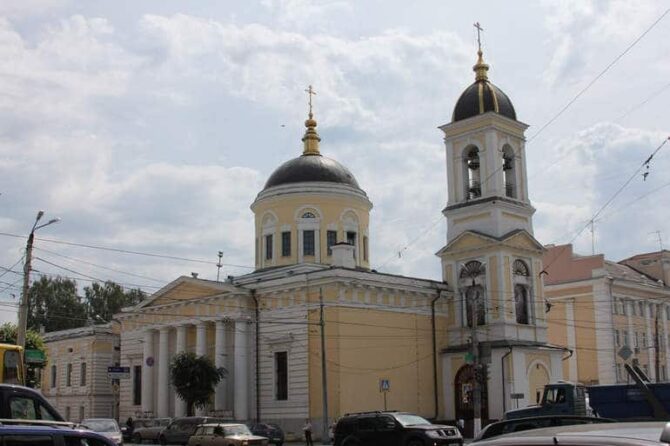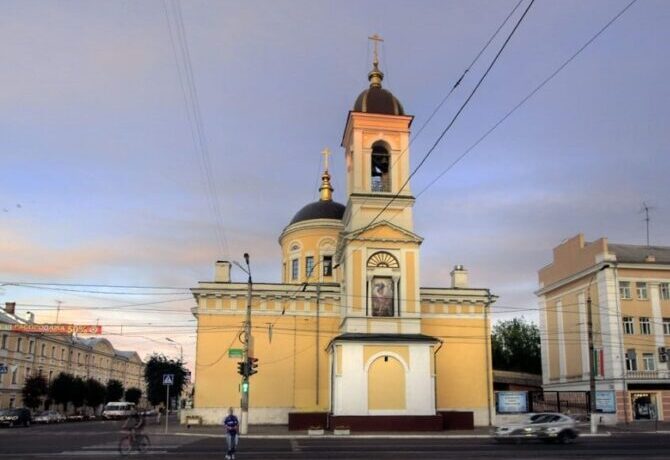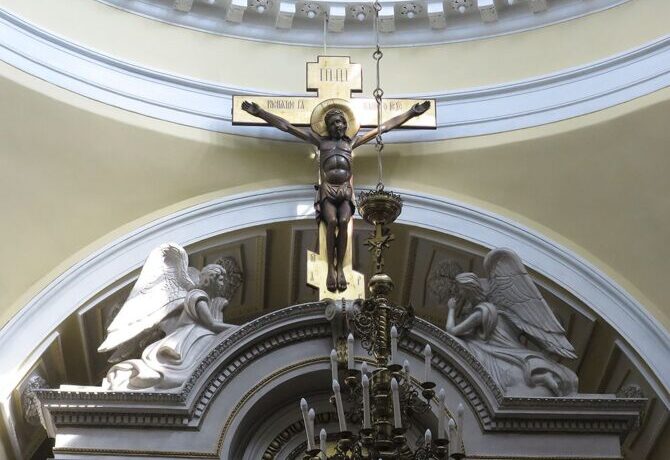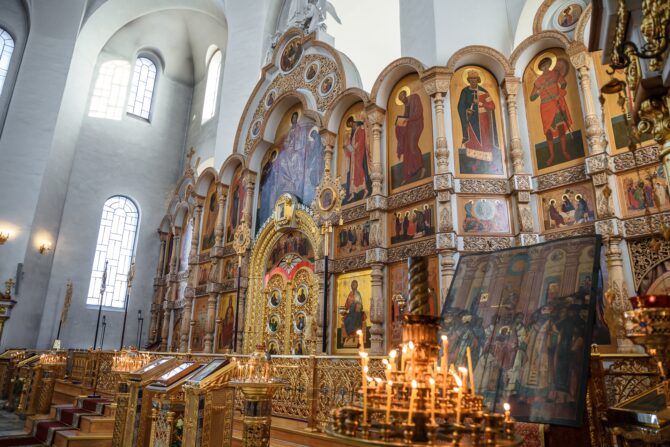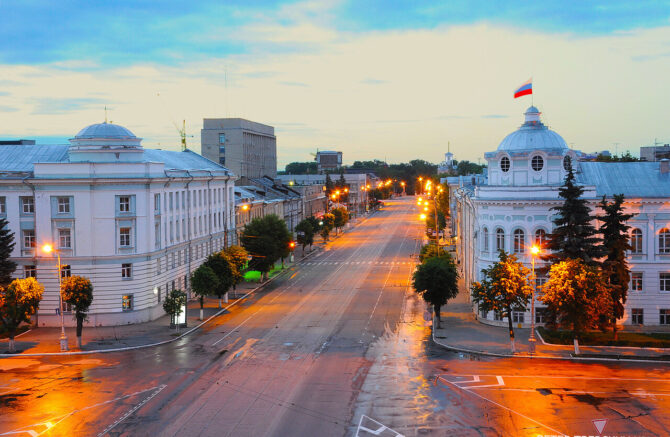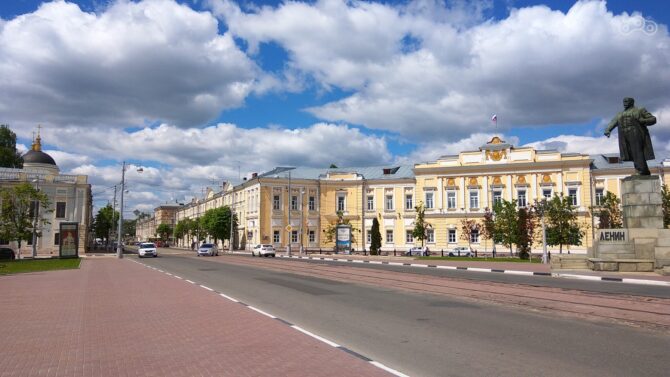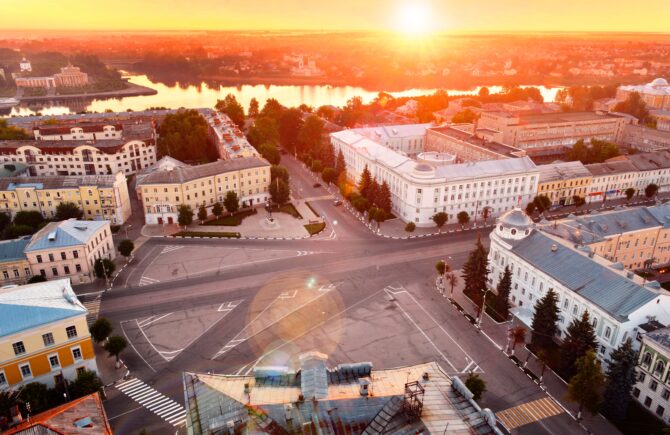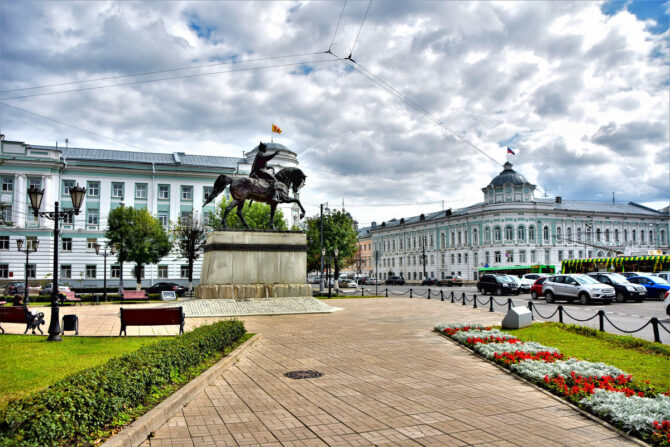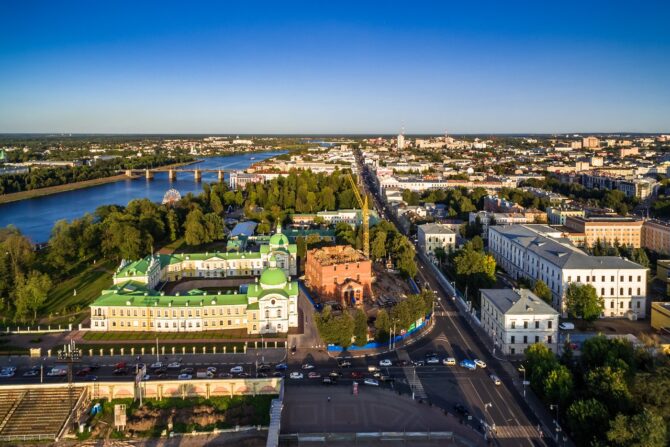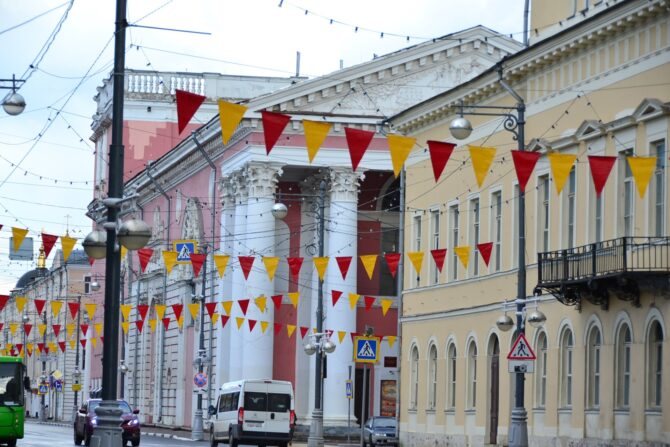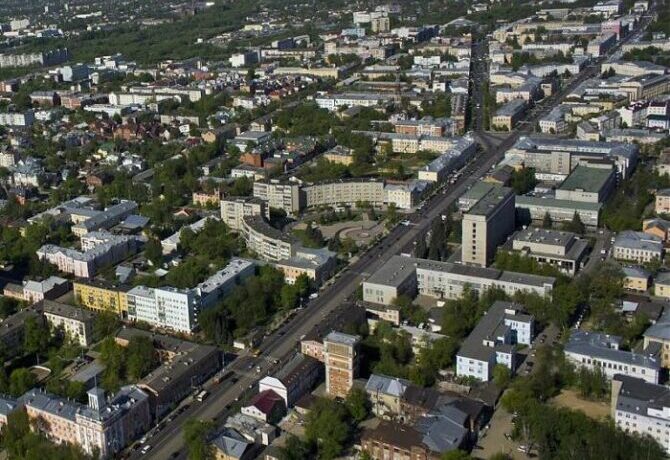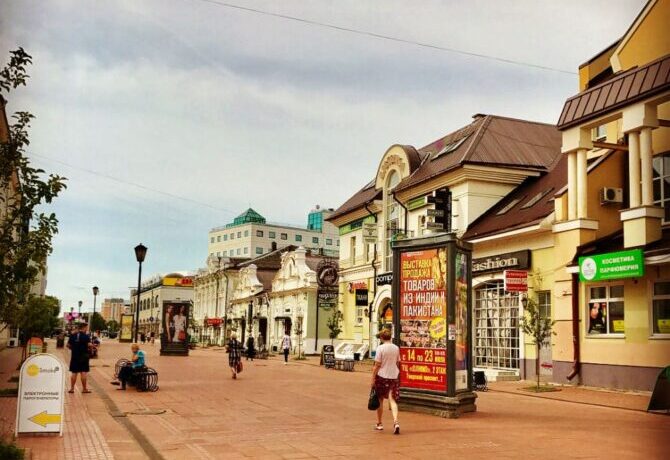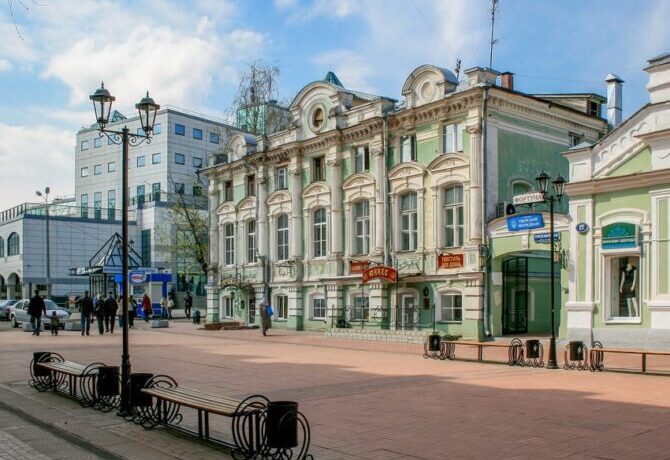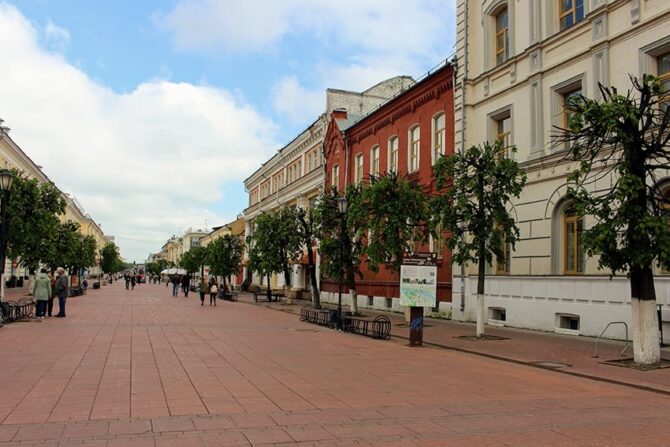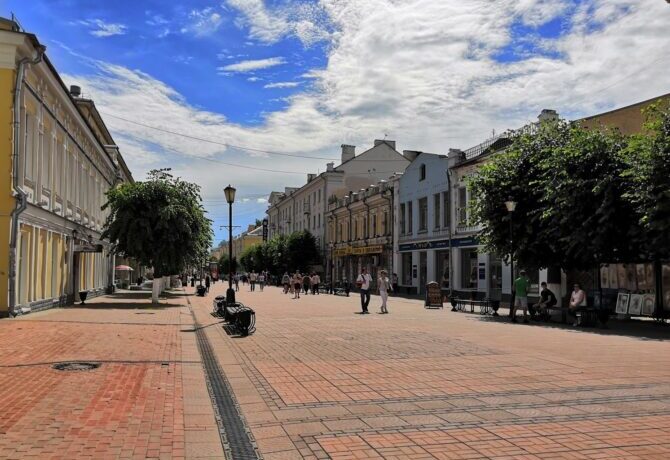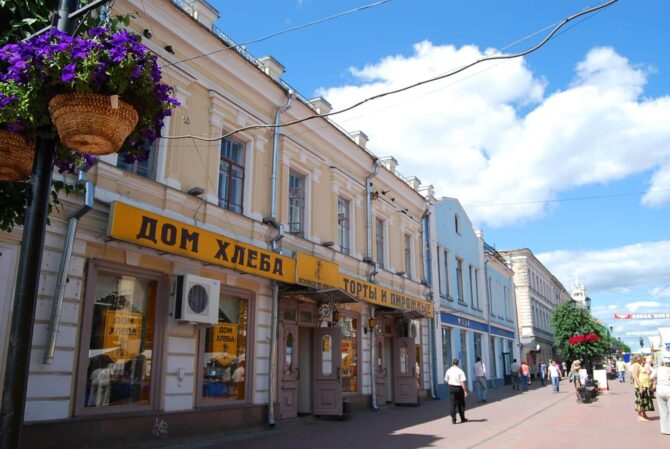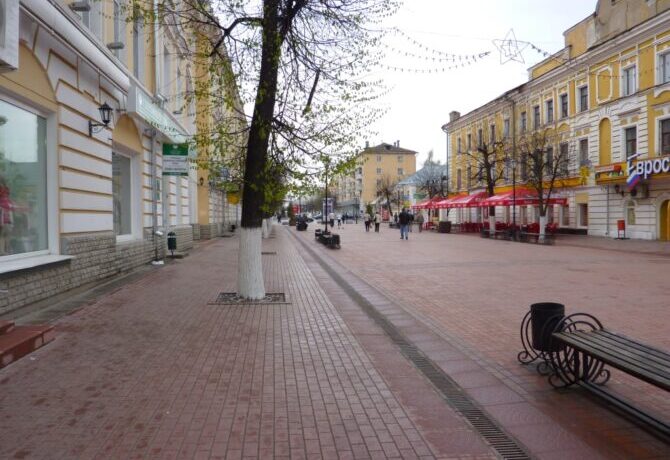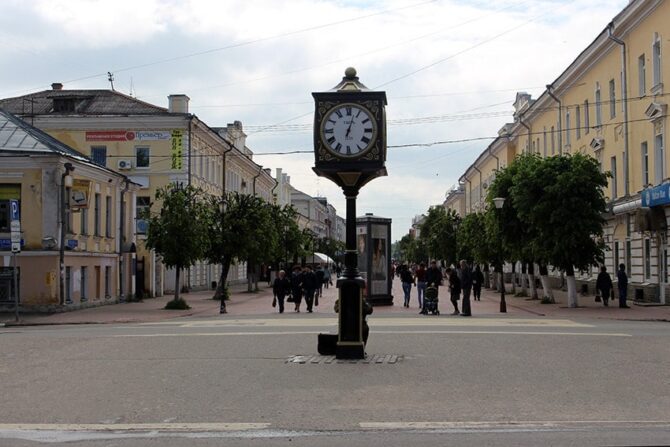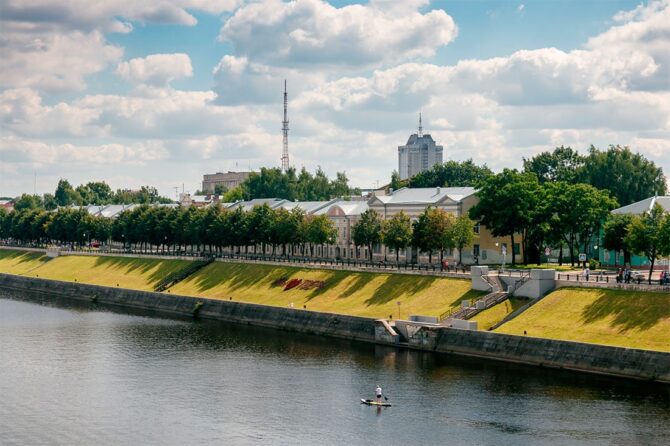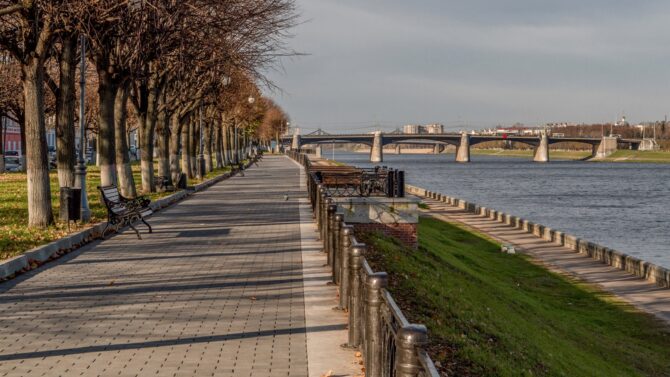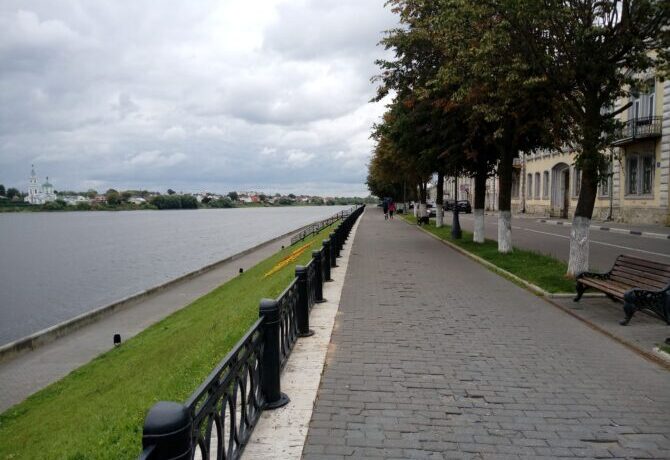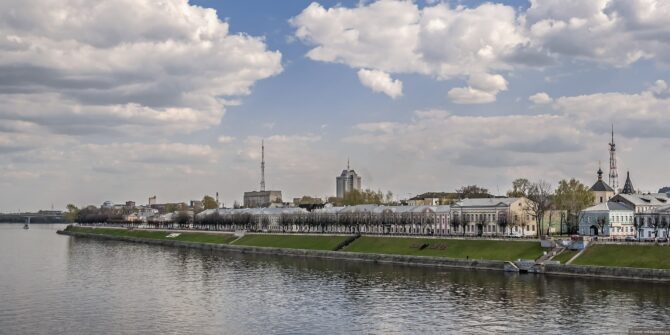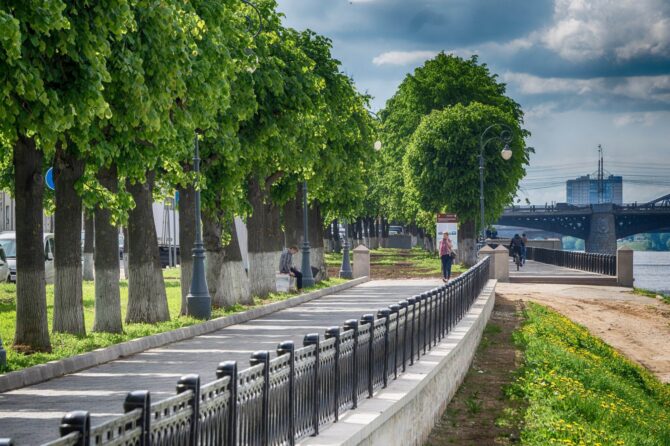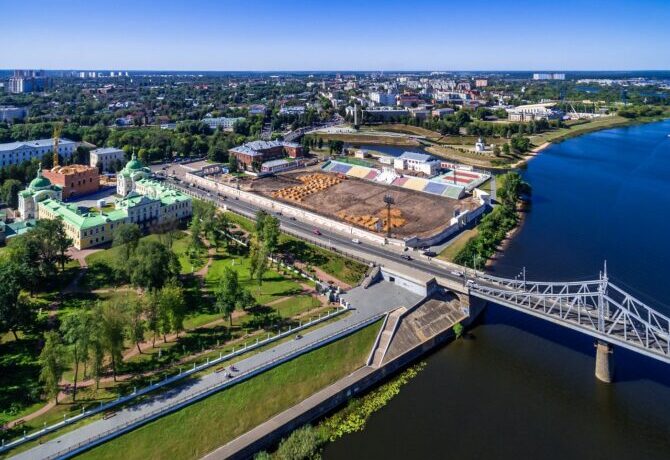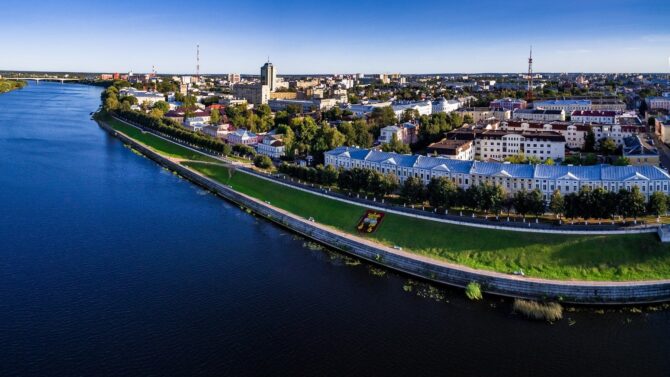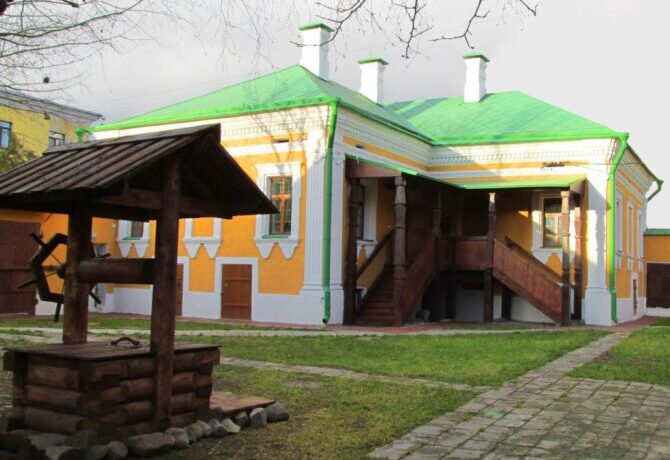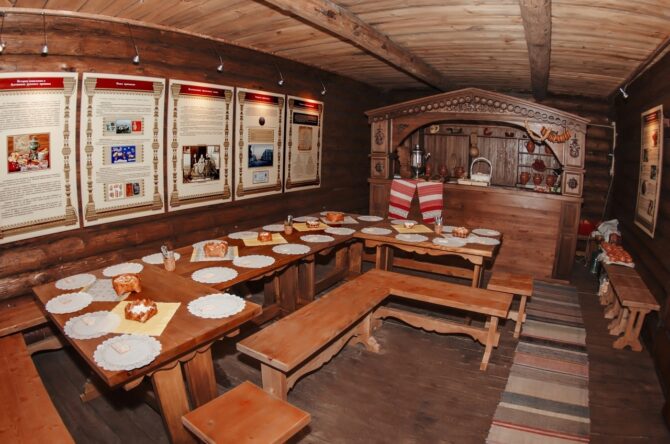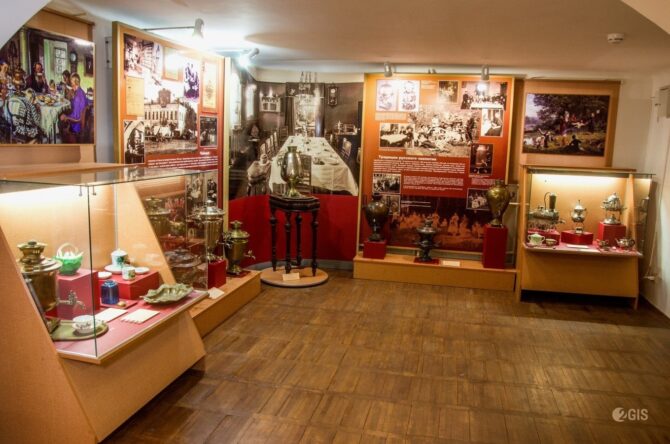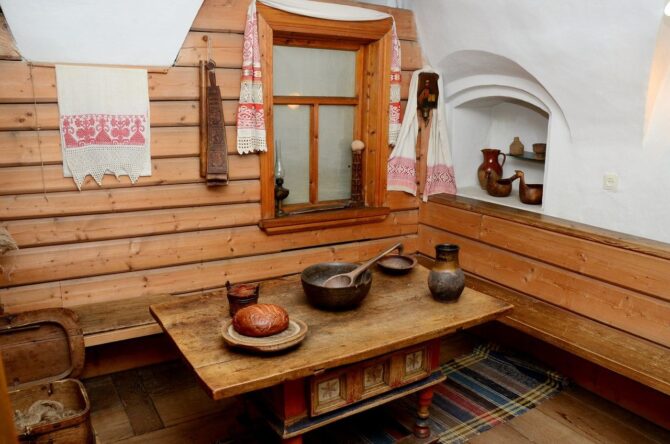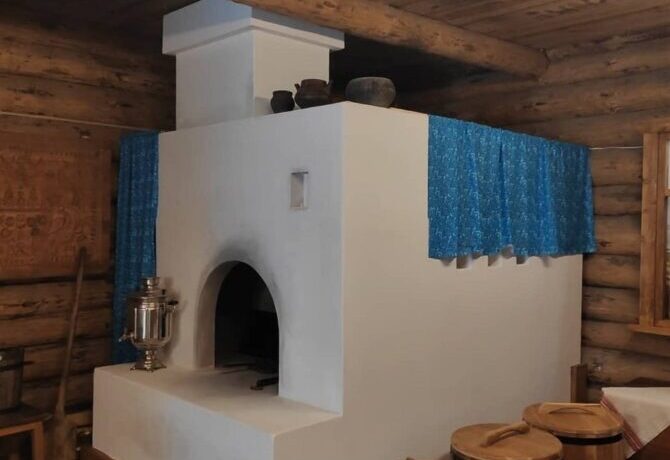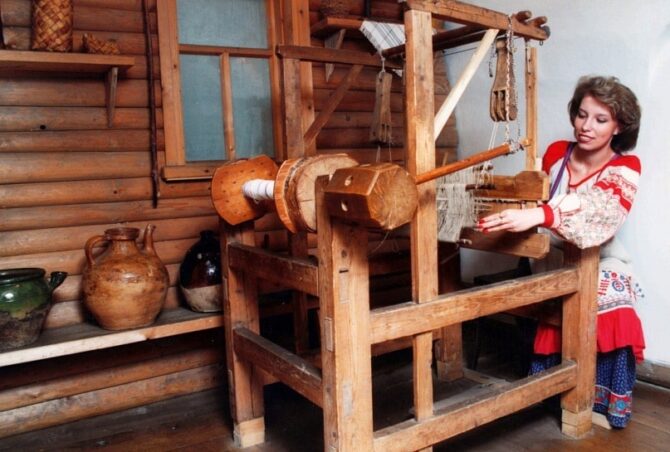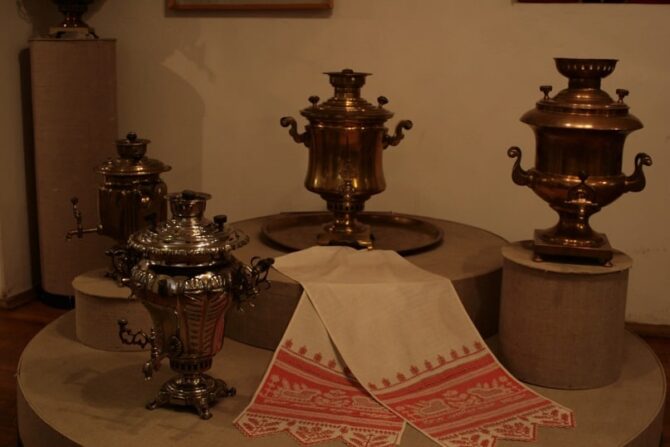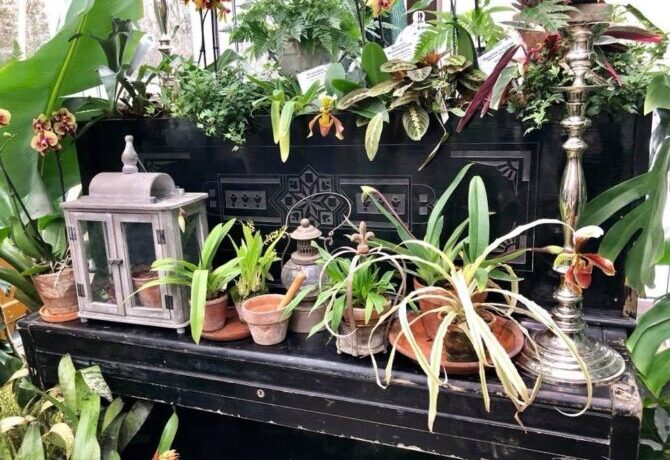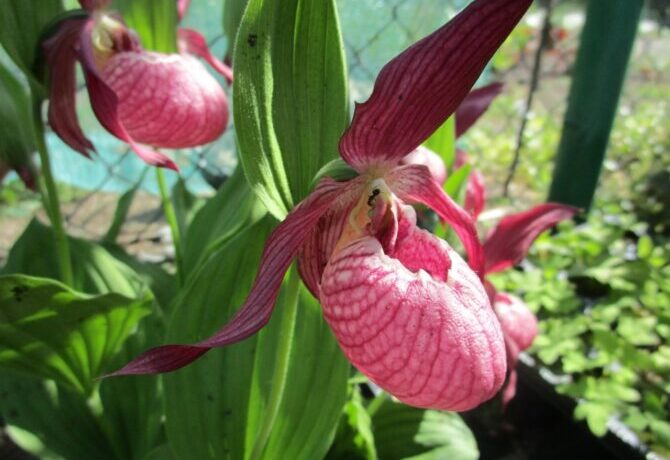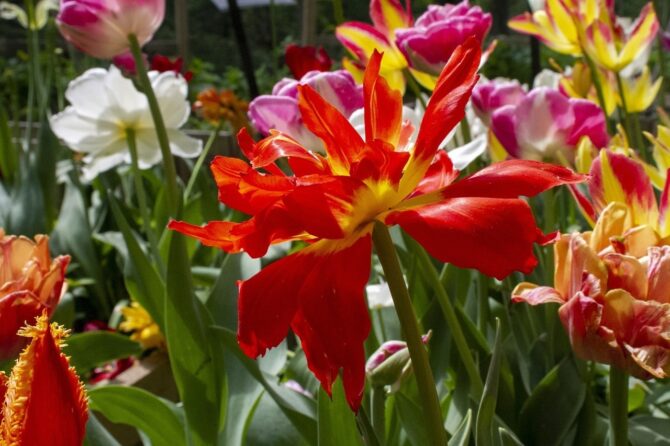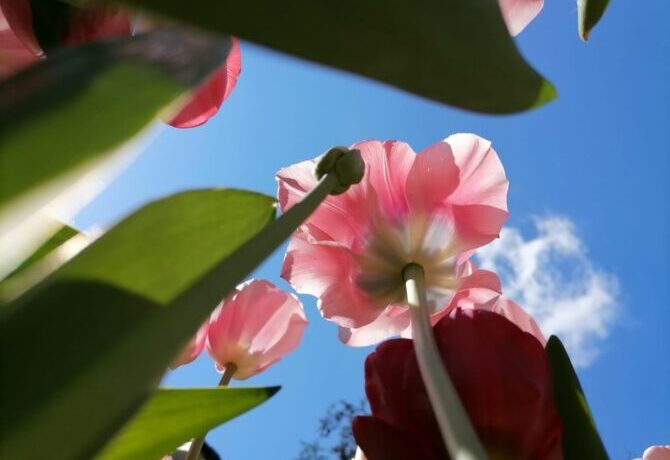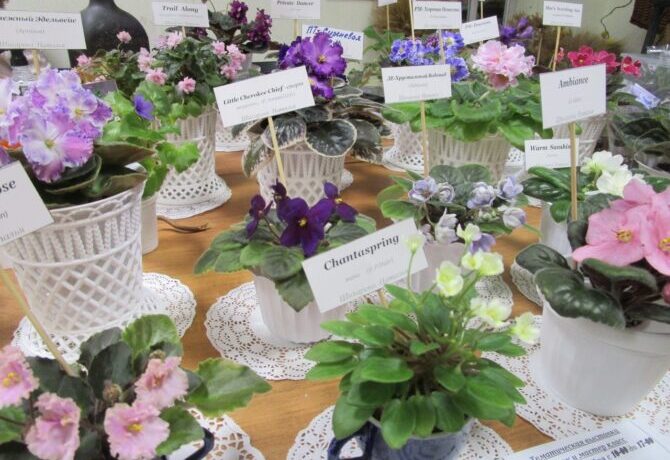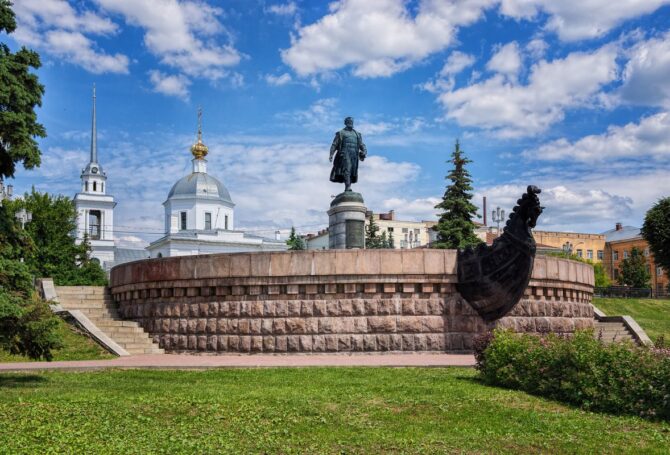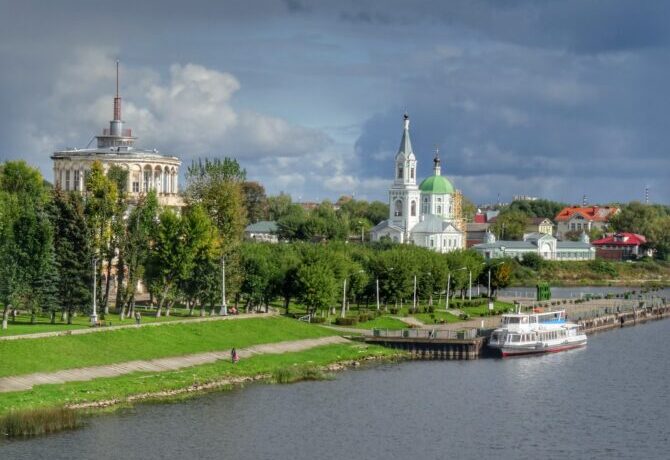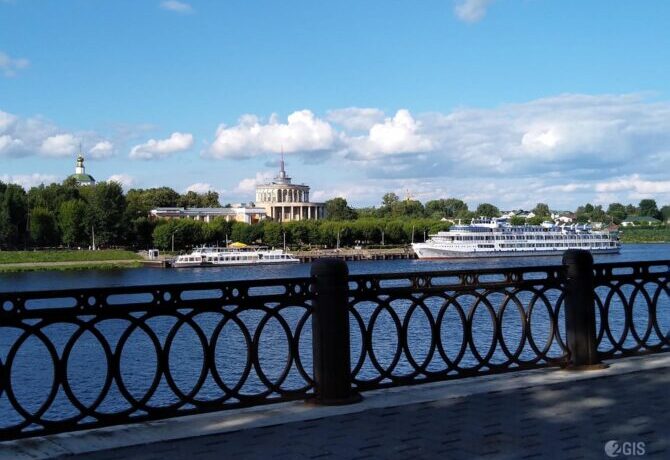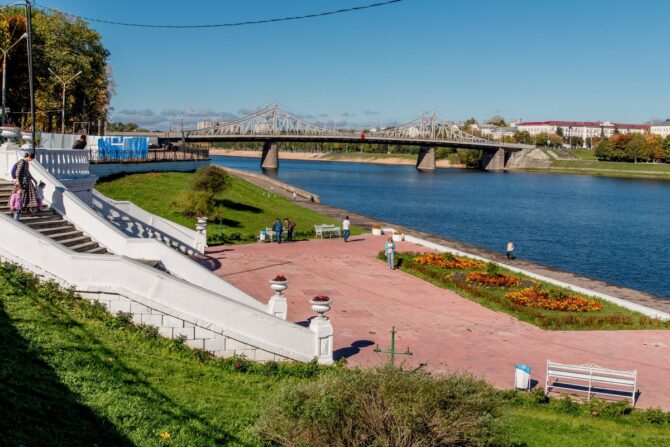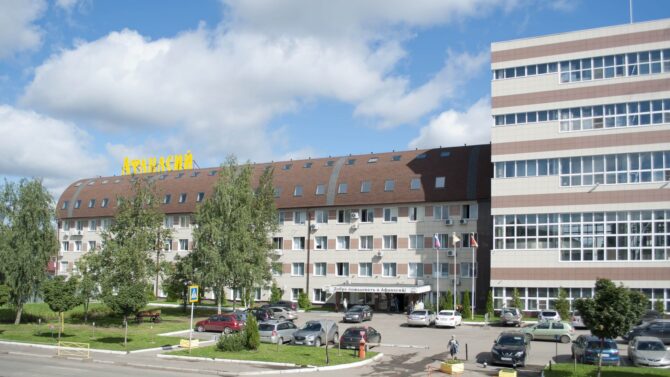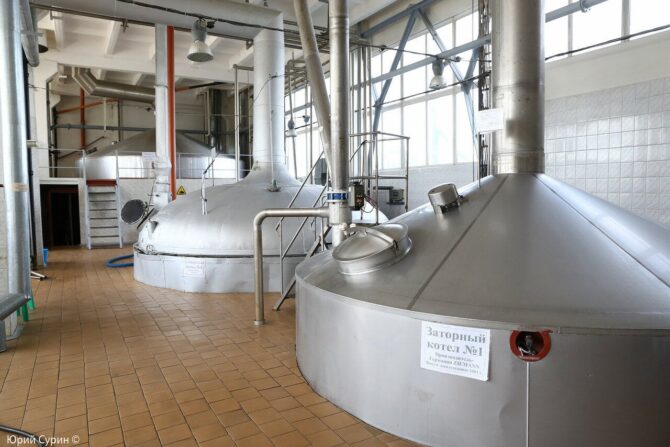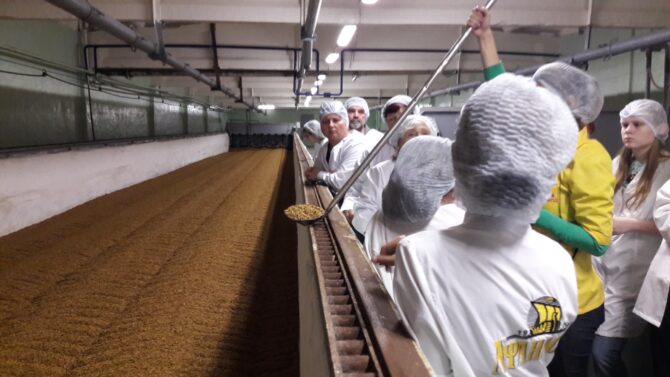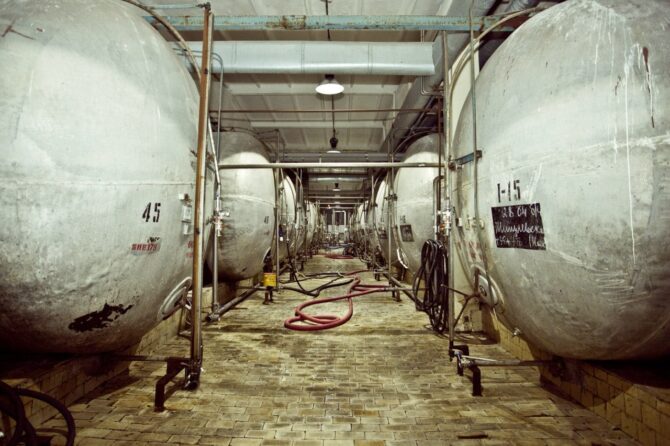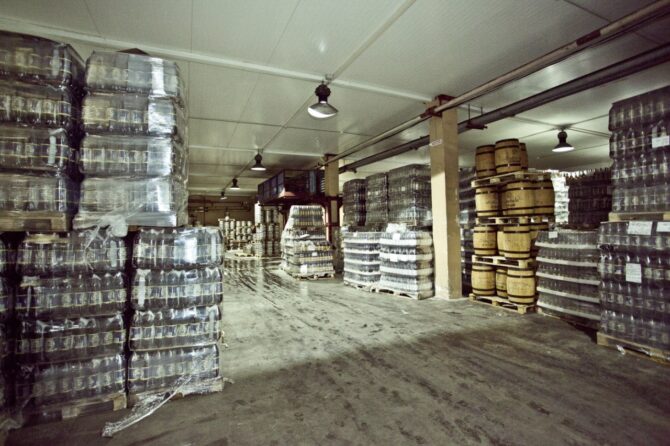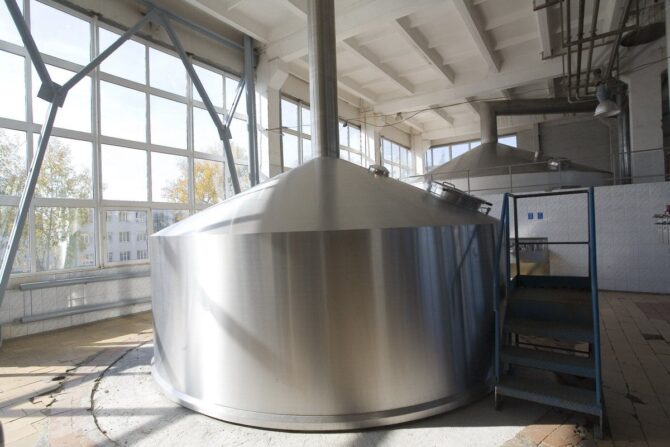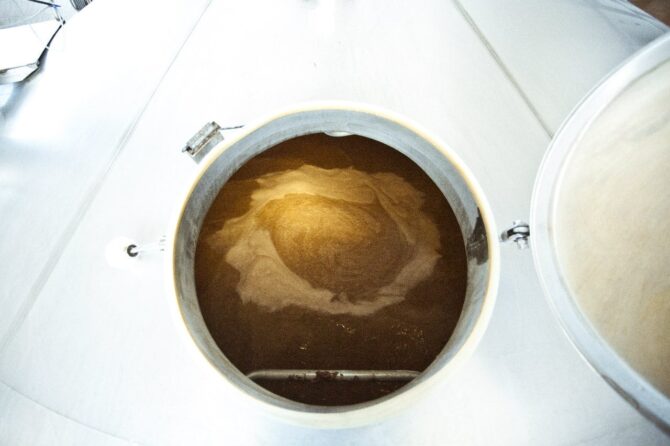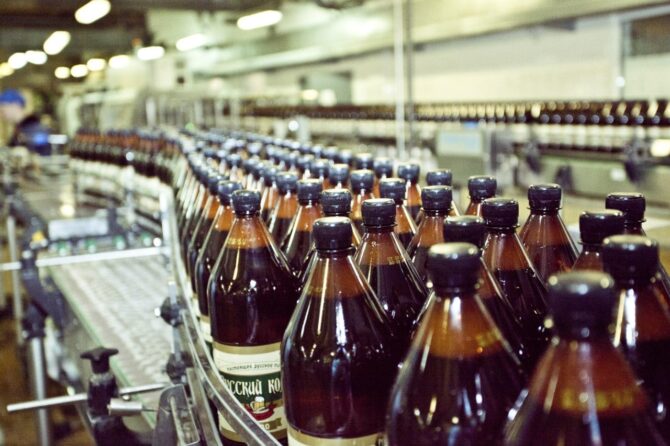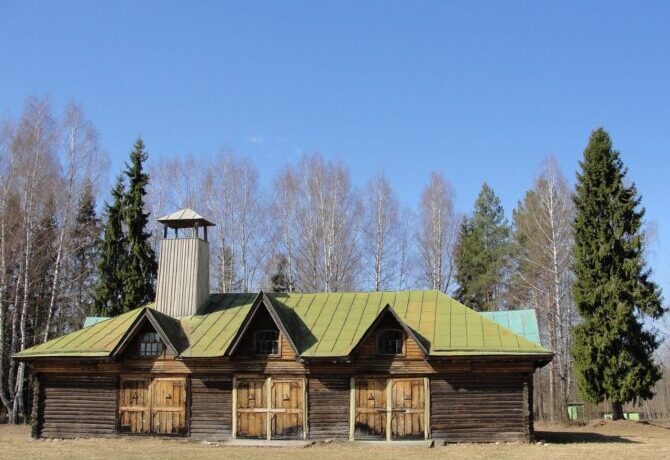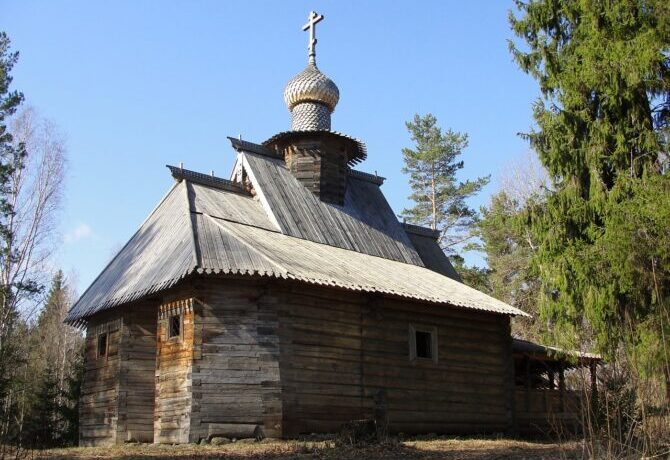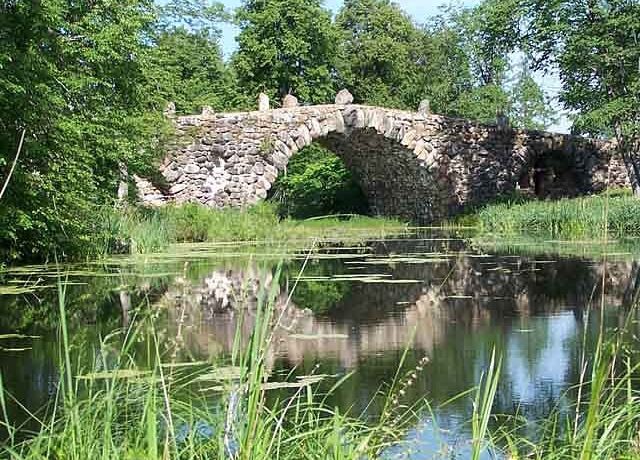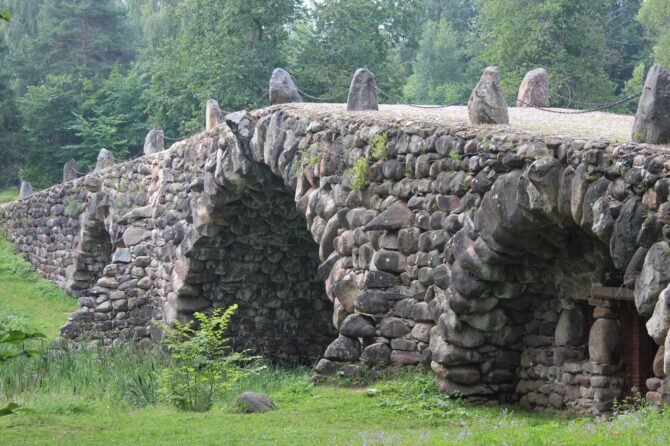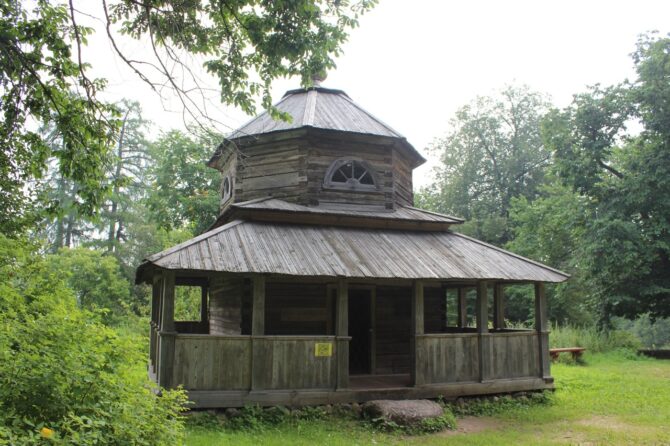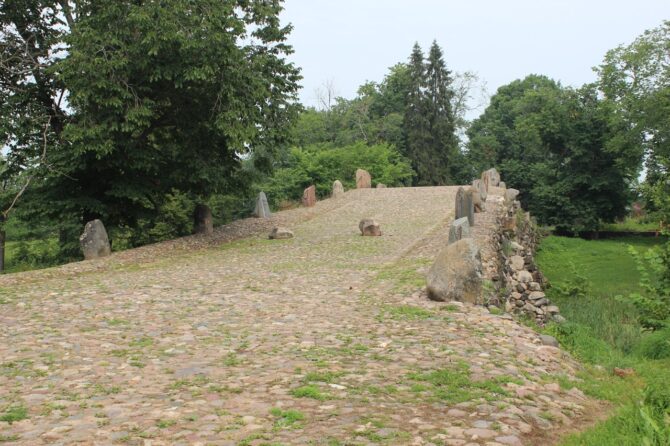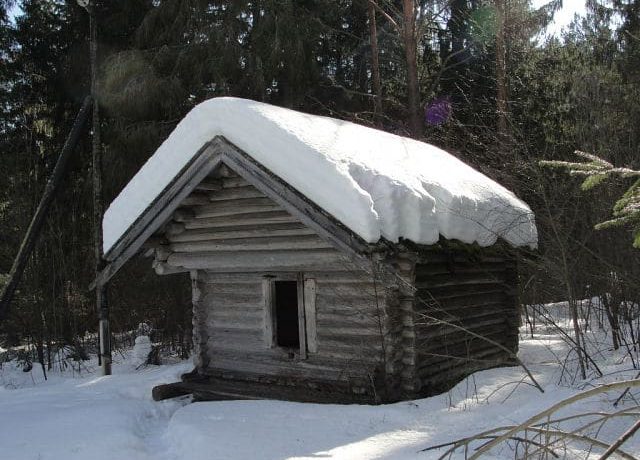In Tver, there are not so many iconic sights, but for 1 day of walking they will definitely suffice. Ancient Tver is the largest administrative, cultural, scientific and tourist center located on the Volga. The first handwritten mention appeared in 1135. But, judging by archaeological finds, people lived here long before that. The settlement was located at the crossroads of important waterways. Here, two of its tributaries flow into the Volga – Tmak and Tvertsa. It is no accident that the native of Tver Afanasy Nikitin, having gone from here on a long journey, was able to “go beyond the three seas” and leave unique travel notes. In the Middle Ages, the Orthodox writer and theologian Maximus the Greek lived here. From 1931 to 1990, Tver bore the name of the “All-Union Starosta” Mikhail Kalinin. Almost all monuments are associated with the history of the city, the region. Comfortable hotels have been built for visiting tourists.
- 1 Attractions Tver on map
- 2 City Garden of Tver. Tver Kremlin
- 3 Imperial Travel Palace
- 4 Ascension Cathedral of Tver
- 5 Sovetskaya Street
- 6 Trekhsvyatskaya Street
- 7 Stepan Razin Embankment
- 8 Museum of Tver Life
- 9 Botanical Garden
- 10 Embankment of Afanasy Nikitin
- 11 Holding «Afanasiy»
- 12 Ethnographic Open-Air Museum “Vasilevo”
Attractions Tver on map
City Garden of Tver. Tver Kremlin
In the center of Tver is the City Garden. It is located on the site of the destroyed Kremlin, where excavations are still being carried out. The fortress was built in the 12th century. During the Mongol-Tatar yoke, Tver was an outpost of the borders of the Upper Volga cities. Wooden walls and towers were repeatedly destroyed during sieges and hostilities. They were restored and the city was again ready for another battle.
Tver has long fought with Moscow for the right to dominate Russia. Only in 1488 Ivan III managed to unite both principalities. The city lost its capital ambitions, but remained a major trading center. In the Kremlin, the residences of moscow governors began to be built. They were rebuilt again until 1763, until the defense structures finally burned down during a fire. Catherine II tried to restore the fortifications, but by that time there was no need to strengthen the settlement. The state borders were further away, and Tver was in the center of the empire.
For the Empress built a palace, which has survived to this day. She stayed in it during her trips to the cities of Russia. For him the name Puteva was fixed. On the territory of the Kremlin since the end of the 13th century was the Transfiguration Cathedral – the first stone building in the city. In 1935, it was blown up on the orders of the Soviet authorities. It was a majestic temple that Khan Duden did not dare to storm in 1293. But the Soviets decided in the fight against religion to destroy the ancient architectural monument. Since 1992, work has been underway to restore it. First, exploratory architectural and archaeological excavations were carried out, then according to the results obtained, old photographs and drawings, a project was created.
No less tragic fate befell the City Garden. In 1931, the Palace, Governor’s and Public Gardens, created in the 18th-19th centuries, were merged into a single park area. During the war, the Central Park of Culture and Recreation was completely destroyed. In the postwar years, redevelopment was made here, trees were replanted. Today the City Garden is a landscaped area with alleys, clubs, recreation areas, attractions. Within walking distance is the embankment of Mikhail Yaroslavovich.
On the territory of the Garden and the Kremlin there are the Imperial Travel Palace with an art gallery, the Khimik stadium, the remains of the fortress moat, the Museum of Local Lore, the Zvezda cinema built in 1937, which has the form of theatrical binoculars. Nearby are the hotels “Seliger”, “Volga”, “Osnabrück”, “Governor”. Tourists staying in other areas of the city can be reached by bus 9, 20, 21, 52, 207, 211 or taxi number 534.
Address: Mikhail Yaroslavovich Embankment, Tver, Russian Federation
Imperial Travel Palace
Particular attention of the guests of the city is attracted by the Imperial Travel Palace, built in 1764-66 for Catherine II. The author of the project was the architect Peter Romanovich Nikitin. He combined classicism with Baroque elements. The royal family stopped here on the way from St. Petersburg to Moscow. At the beginning of the 19th century, Alexander I’s sister Catherine Pavlovna lived in the palace. She was married to the Tver governor. By her order, the architect Rossi rebuilt the building, making it convenient for organizing social activities, salons and balls.
In 1864, the architect Alexander Rezanov remade the palace in the “old Nikitin” style. In 1866, on the initiative of Governor P.I. Bagration and a group of dignitaries decided to create a historical, archaeological and industrial public “museum” in Tver. The first exhibition included only 4 paintings, but they became the basis of the permanent exhibition of the gallery, opened in 1896 in the Imperial Travel Palace.
After the revolution, councils of workers and peasants met in the building. In 1937, the art gallery resumed its work here. In 1941, the palace was completely destroyed. It was restored from 1942 to 1948. Today, the museum’s collection contains more than 50 thousand exhibits. Among them are works of cult ancient Russian art, painting, graphics, sculpture, decorative and applied creativity of Russia, Europe, Asia.
The complex consists of the main two-storey building of the palace, the entrance courtyard, two wings. In the main building there are exhibition halls, a library, royal chambers, a reception hall. Of the 14 travel palaces in Russia, only 9 have survived. Tverskoy is one of them. This oldest building in the city is its most precious landmark.
Official site: https://gallery.tverreg.ru/
Address: 3 Sovetskaya St., Tver, Russian Federation
Ascension Cathedral of Tver
The stone building of the temple with a chapel was built from 1751 to 1760. Then two more chapels were completed – the Epiphany, in honor of Anthony and Theodosius of the Caves. In 1763, a fire in Tver destroyed almost the entire center. The temple was damaged, but was restored. In 1805, a high bell tower appeared. The church received parishioners, held divine services until 1935. Even when all valuables were confiscated by the authorities in 1922, the priests continued to serve. In 1935, the temple was closed, the building was transferred to the jurisdiction of the local history museum. Since 1936, one of the expositions began to function in it. During the war, the cathedral briefly opened with the permission of the occupation authorities, but after the liberation of Tver was again closed. In 1972, the premises were converted into an exhibition hall. In 1991, it was decided to give the church back to the faithful. After the restoration work, which lasted 2 years, the cathedral began to receive parishioners again. Here are stored the relics of the Hieromartyr Thaddeus.
Today it is not just a church where people come to worship or put a candle. This is a humanitarian center, whose work is aimed at the benefit of citizens. The irini Youth Club regularly holds meetings with high-ranking clerics of the country. The children, together with mentors, make pilgrimages, conduct volunteer work to care for the disabled and the elderly. Three schools are open at once at the temple – the traditional Sunday for adults and children, as well as the unique “Svetlitsa”. In it, everyone is taught the technique of Tver embroidery. The creative team headed by the project manager participates in international exhibitions, competitions and seminars. Together with the Poltava District Deanery District of the Kuban Metropolis, the Kuban-Tver project is being implemented. Cossacks come to Tver to get acquainted with the life and work of Alexander Nevsky (born in 1221). The family of the prince ruled the Tver principality for about two centuries. In the city and the surrounding area there are many places associated with the name of the great Russian commander who won the Battle of the Ice. At the cathedral there is a pilgrimage service “Ark”, which organizes trips to the holy places of Russia.
Site: https://vosnesenie.ru/
Address: 26 Sovetskaya St., Tver, Russian Federation
Sovetskaya Street
After the revolution, all the central streets of Russian cities were renamed in honor of the new state and its leader. The same fate befell the former Catherine, and then Millionnaya Street of Tver. It stretches along the bank of the Volga from Smolensky Lane to the bridge over the Tmak River. Each house built here has its own history and architectural value. The year of its foundation is considered to be 1763, when, after a fire, Catherine II approved a new plan for the development of the city. During the reign of Paul I, the street was renamed Millionnaya. After the revolution – to the Soviet revolution. The walk does not take much time and will give the traveler a lot of pleasant emotions from the ancient architecture.
At the very beginning of the main street of Tver is the Imperial Travel Palace, which is written just above. Gymnasium No. 5 was founded in a building built in 1905. The modern complex of the Medical Academy (built in 1954) is slightly knocked out of the architectural ensemble, but in its own way it is also a rarity. The State United Museum occupies the corner building of the former craft school, built in 1866. In the house number 5 today a residential complex has been created, and earlier in the old building, built by architect P. Nikitin in the 18th century, the Barsukov hotel was located. The diocesan administration and the church of the 12 apostles are located right there. The city administration occupies the building of the former Provincial Government, built by the architect Stengel in 1778-83. The house, which today houses the Bank of Russia, was built in 1771-73. Its architecture is sustained in the characteristic for that time transition from Baroque to Classicism.
The House of Officers is based in the House of the Noble Assembly. It was built according to the project of the architect I.F. Lviv in 1842 in the style of late classicism. Nearby is a building of the Stalin era (1951), which houses the Tver Drama Theater. It is located opposite the City Garden and the monument to Karl Marx. In addition to him, there is a theater for children and youth on Sovetskaya Street, it is located in the house No. 32. Three houses later on the same side stands the Resurrection Cathedral. A whole block between Sovetskaya and Krylov streets is occupied by the building of the former Zemstvo Council (ser. 19th century). Today, the Government of the Tver Region sits in it, the residence of the Governor is equipped. The building of the MESI branch, the Catholic Church of the Transfiguration of the Lord, the regional center of children’s and family readings may also be of interest. A.S. Pushkin.
Trekhsvyatskaya Street
After the great fire of 1763, Trekhsvyatskaya Street appeared in Tver, which today is reorganized into a pedestrian zone. This is a kind of Tver Arbat, which determines the historical center of the city. The length is 1 km 300 m, the street passes perpendicular to the Volga and the embankment of Stepan Razin. At one time, the way to the Trekhsvyatsky Monastery lay through it. Hence the name. In 1979, the modern Palace of Pioneers was built on the site of the monastery. From the former splendor of the monastery, only a park with ponds remained.
In 1901, the first tram in the city was launched along Trekhsvyatskaya Street. This transport system lasted until 2018, not “living” to its 120th anniversary for only three years. By order of the city administration, the tracks were dismantled, all employees were dismissed. The head of the city explained to residents that the dismantling is necessary for the further development of transport routes in the center of Tver, in which the tram is not provided. Now as a memory on the boulevard there is an old trailer, which is used as an advertising pedestal.
The architectural ensemble of the street consists of two and three-storey old mansions. But there is also a share of eclecticism. For example, at the very beginning over the cozy houses of clouds made of metal and glass, hangs a super-modern hypermarket “Olympus”. Then everything becomes harmonious. The atmosphere plunges the tourist into the charm of the Russian provincial city. Almost all buildings have historical significance. In many mansions on the first floors there are small cafes and restaurants. In Soviet times, the street was named after the revolutionary Uritsky. In 1992, it was returned to its former name.
The modern tradition of decorating pedestrian areas with art objects and sculptures has not passed Tver. One of the attractions of Trekhsvyatskaya Street is the monument to the chansonnier Mikhail Krug. The poet and bard was born and buried in Tver. On the boulevard there are many original shops. In them and in street shops you can buy souvenirs. The street passes through Lenin Square and descends to the embankment of Stepan Razin.
Stepan Razin Embankment
A picturesque area for walking and recreation stretches along the Volga for 1 km 200 m. At its very beginning (house number 1) is the cinema “Zvezda”. It was built in 1937 by architect V.P. Kalmykov in the style of late constructivism. If you look at it from above, the silhouette resembles binoculars. The next house built in 1935 previously housed the headquarters of the Kalinin Military District. It was also called the “House of Voroshilov shooters”. Today there is a hotel of the Military Academy. By the way, nearby there are very inexpensive hotels, including hostels “Kalinin” and “Box inn”, guest house “Luidor” (150 m).
After the Novovolzhsky bridge, the nature of the building changes dramatically. It is dominated by cozy mansions with forged balconies built in the 19th century. They were designed by architects Carl Rossi and Matvey Kazakov. Some buildings have historical value. Like, for example, the khozinsky estate or the ensemble, which now houses a children’s hospital. The embankment is landscaped, alleys are broken, paths are laid, along the shore the sidewalk is lined with tiles. Here you can finish the first excursion day.
Museum of Tver Life
In the old estate of merchants Arefiev opened exposition of the Museum of Tver life. The buildings were built in 1784 by the architect Stengel. This is the only architectural ensemble in the Baroque style, preserved in the city. Exhibition halls and storage occupy the central house, both wings, outbuildings. In 2012-13, a large-scale restoration was carried out.
Today, the museum has two main expositions. “Visiting the Tver merchants” is a complete reconstruction of the interiors of the living quarters of merchant houses of the late 19th century. Fully equipped hallway, living room, bedroom, children’s room, master’s office. The design uses authentic furniture of that period, decorative elements, children’s toys. “Russian samovars. Tver Tea Party” is a reconstruction of the interior of the Russian tea room. Exhibition exhibits are located right there. These are sbitenniki, samovars, tea makers, dishes and utensils for tea drinking.
Recently, an interactive space “Tverskaya Gingerbread” was opened on the territory. It was created in the premises of an old bakery. The museum hosts thematic excursions, master classes, interactive events. The nearest public transport stop “River Station” is within walking distance from the museum.
Official site: https://tvermuzeum.ru/affiliates/mtb/
Address: 19/4 Gorky St., Tver, Russian Federation
Botanical Garden
A walk through this area of the city center can be started with the Botanical Garden of Tver State University. The stop is the same – “River Station”. This is one of the oldest botanical gardens in the north-western part of Russia. In 2019, it celebrated its 140th anniversary. Its territory is a unique place where it was possible to preserve areas of the historical landscape of the ancient posad of Tver. During the war, the garden was seriously damaged. Students and professors of the university undertook its restoration. At this time, the greenhouses were replenished with new varieties of flowers, a building for employees was built, new expositions were laid, and the territory was fully landscaped. Today, visitors are presented with 8 thematic expositions and 6 fund collections. In total, more than 350 species of trees and shrubs, 2 thousand herbaceous plants grow in the garden. One of the main attractions is the pond and the bed of the Buhan Creek, plotted on 18th-century maps.
Employees regularly hold thematic events. This tradition originated a long time ago and is supported by all botanical gardens of the world. For example, in the Netherlands every spring for two months there is a Tulip Festival, in the Nikitsky Botanical Garden – a chrysanthemum ball. Tver Botanical Garden is famous for the Festival of Spring Flowers. During the summer holidays, an ecological camp for schoolchildren opens here. During the academic season, trainings for teachers, environmental actions, creative seminars are regularly held.
Official site: http://garden.tversu.ru/index.html
Address: 16 Shevchenko Lane, Tver, Russian Federation.
Embankment of Afanasy Nikitin
The river station is located on the embankment of Afanasy Nikitin. From here you can go on a trip by boat, but first you should walk and see the sights. This territory, called Zavolzhsky Posad, was settled and rebuilt from the 14th century. When all the wooden buildings burned down during the fire of 1763, the residents built stone houses here. In the middle of the 13th century, the Otroch Monastery was founded on the shore. In the 30s of the last century, it was destroyed in connection with the reorganization of space. Of the monuments, only the Cathedral of the Assumption of the Blessed Virgin Mary remained. From it begins the countdown of buildings located on the embankment.
The temple was built in 1722 in the Style of Naryshkin Baroque. In 1799-1800, its inner walls were decorated with paintings by the icon painter Matvey Chelpovsky. In Soviet times, the cathedral was closed, in its premises there were exhibition halls of the art gallery. In 1994, the temple was returned to the RoC, its complete restoration was carried out, but in the period from 2005 to 2010, despite public protests, the old painting was completely destroyed. The temple is active, it regularly holds services. Nearby is the River Station, which seized most of the former monastery courtyard.
On the embankment is the Resurrection Church (Three Confessors). It was built in 1731. In Soviet times, the frescoes and two tiers of the bell tower were destroyed. In the 90s, restoration work was carried out, after which the temple was opened to the public. In front of him there is a monument to Athanasius Nikitin. It was created by sculptors S.M. Orlov and A.P. Zavalov designed by architect G.A. Zakharova. The opening took place in 1955.
A little further is the first building in Tver, built in the style of classicism. This is the house (No. 44) of the Zubchaninov merchants, which at one time housed the Theological School. In the next house there is an Art College. Venetsianova. In the park on the embankment there is a monument to submariners. The infrastructure of the park has to walk, in the park area there are attractions and a small Ferris wheel. There is a stage area decorated in the form of an amphitheater, 2 sports and 4 children’s playgrounds. On the embankment of Afanasy Nikitin there are hotels “Golden Plaza”, “Hyde Park”, “Governor”.
The building of the River Station, built in 1938, is also of interest to lovers of architectural solutions of the Stalin era. It is located at the confluence of the two main rivers of the city – the Volga and Tvertsa. Today, restoration and restoration work is being carried out here (in 2017, the roof collapsed, then part of the rotunda collapsed). Ticket offices work only during the navigation period. Excursion vessels depart from the pier.
Holding «Afanasiy»
Returning at the end of the excursion day to your hotel, it is recommended to look into the holding “Afanasy”. This is an enterprise that preserves the traditions of ancient food and beverage production. Tours of the brewery and cheese factory are available by appointment. If there is no time to visit the production, then the products can be bought in retail outlets of Tver.
The brand has long been the hallmark of the Tver land. At the brewery, visitors are introduced to the secrets of the production of beer, kvass and snacks according to the author’s recipes. Family tours to the cheese factory are popular. Tourists are waiting for interesting stories from the past and modern production of traditional products for russian feast, tasting, branded stores.
Both objects are located outside the city, so it is better to use your own car or book a transfer at the hotel. All information about the time and cost of excursions can be found on the official website of the holding: https://www.afanasy.ru/.
Address: 95 Kominterna St., Tver, Russian Federation
Ethnographic Open-Air Museum “Vasilevo”
The surroundings of Tver fascinate the eye with natural beauty. Here is Lake Seliger, the monastery of the Nilov deserts, the picturesquely decorated source of the Volga. But the most recommended place for a tourist trip is the ethnographic open-air museum “Vasilevo”.
The estate belongs to the architectural monuments of the late 18th – early 19th centuries. It was built by the famous architect Nikolai Alexandrovich Lvov for his brother from Tver. Unfortunately, the wooden building burned down, only the outbuilding, in which the greenhouse is now located, has survived from the farmstead. Of the architect’s buildings, arched bridges lined with stone and wood are well preserved. One of them, made of dry boulders, was called “Devil’s Bridge”. Thanks to the unique hydraulic system, a unique forest park, a linden alley, a system of cascading ponds have been preserved here.
In 1976, an ethnographic museum was created on the territory of the estate, in which the oldest buildings and artifacts of the Tver land are collected. In total, 19 objects are installed on the territory, 16 of which are monuments of ancient wooden architecture.
The Transfiguration Church of the Churchyard of the Savior on Sozi was transported from the Kalinin district. It belongs to the type of “cage” churches with an attached refectory. By the 70s of the twentieth century, the building was completely dilapidated. Money was allocated for its reconstruction, and the building itself was transported to Vasilevo in 1975.
From the village of Pylyovo were delivered the Church of the Sign, the Karelian house and the barn. Znamenskaya Church was built in 1742. By type, it belongs to the ancient cell churches. The village of Pylyevo (Vesyegonsky district) before the formation of the Tver province belonged to Novgorod, so at the end of the 17th century several Karelian families moved here. They brought to the culture and architecture of the motives of their people. Thus, in the ethnographic museum there were exhibits that differ from local architectural trends.
The barn and water mill were brought from the village of Ustye, Udomel district. The time of construction dates back to the end of the 19th century. The village itself has practically ceased to exist. It can only be found on online maps. Today, a couple of people live in it, and the monuments of its architects remain.
A two-storey barn with a canopy appeared from the village of Poreevo, Vesyegonsky district. It is the northernmost settlement in the region. The construction was also affected by the traditions of the Karelian neighbors. Since 1993, there has been no permanent population in the village. It exists on the map, but not in reality.
The fire station from the village of Laptiha was transported and restored in 1982-87. In 2013, due to negligence (elementary did not remove snow from the roof), the building collapsed under the weight of precipitation that fell on it. In total, there were two wooden depots in all of Russia, built around 1912. One (collapsed) was in Vasilevo, the second – in Khokhlovka near Perm. To date, the depot in Vasilevo has been fully restored.
A ring road is laid to the monuments, the landscape near each of them allows you to view the object from all sides. On the territory of the museum, folk holidays are held, wedding photo shoots are arranged (weddings with feasts are held), children’s recreation camps are organized, historical films are shot.
Official site: https://tvermuzeum.ru/affiliates/AM
Address: Vasilevo village, Torzhoksky district, Tver region, Russian Federation.
For those who want to spend the night nearby there are hotels “Torzhok”, “Reef”, sanatorium “Mitino”.

